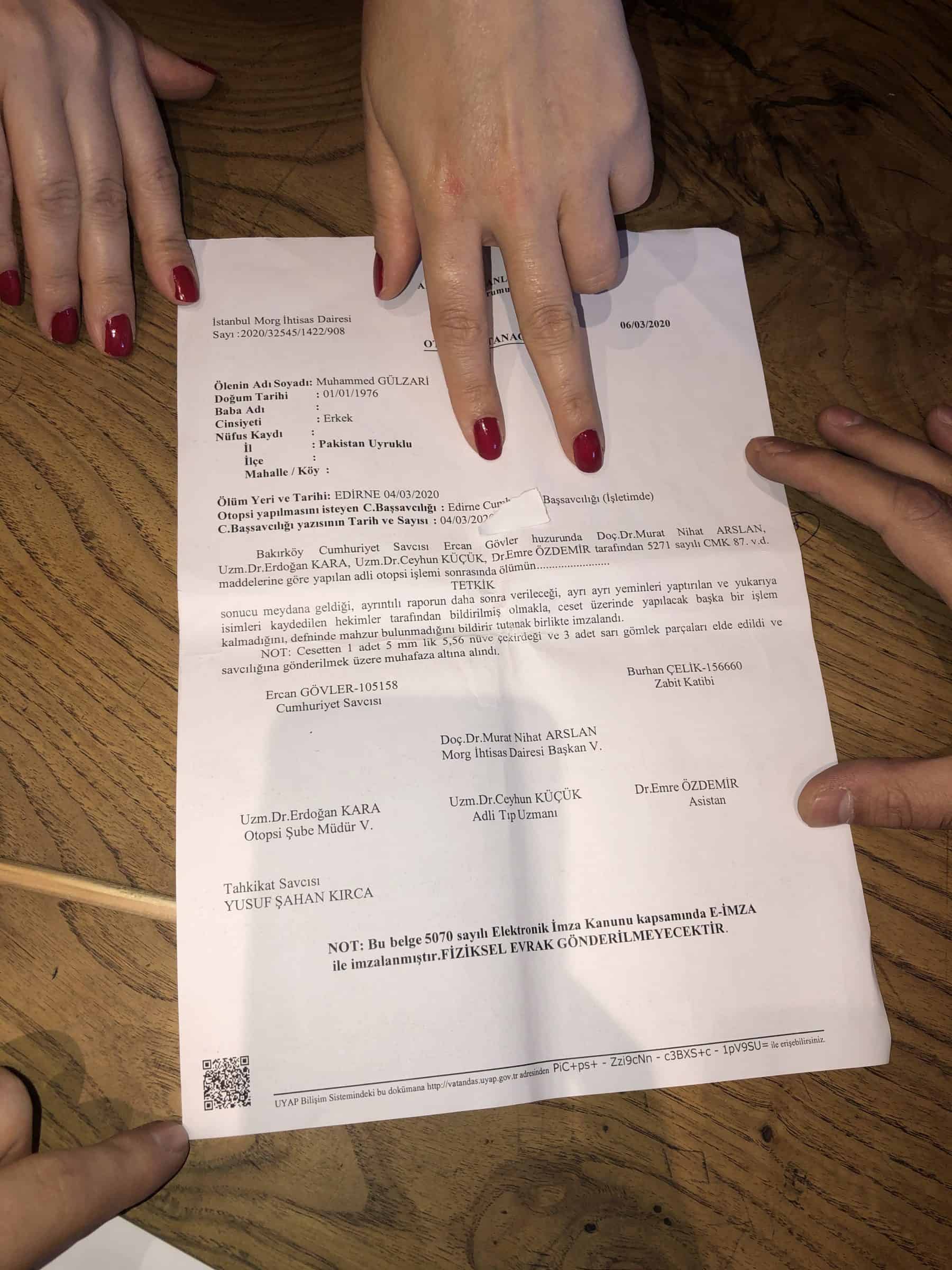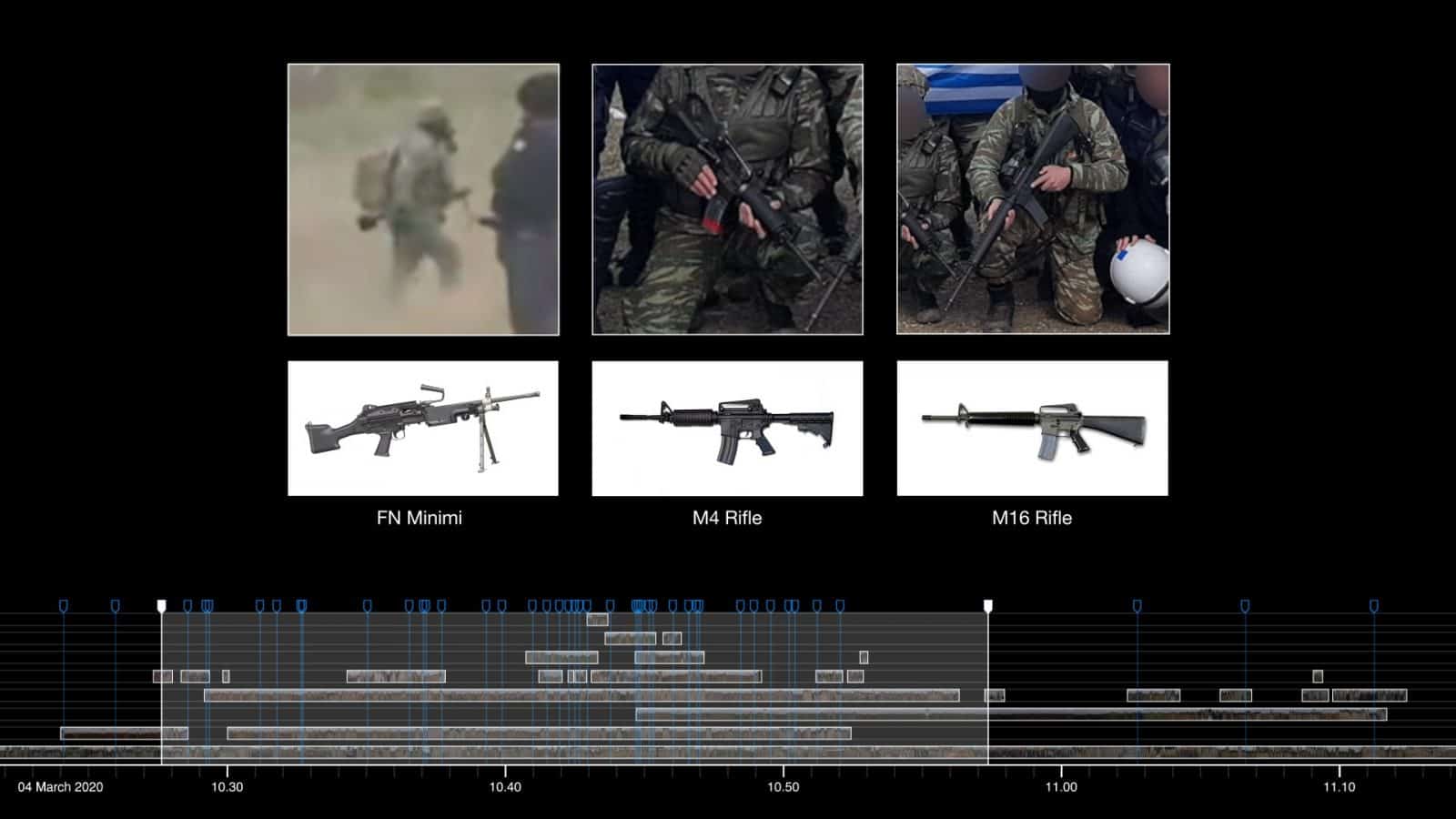Date of Incident
Publication Date
In Partnership With
Additional Funding
Collaborators
Methodologies
Forums
On 27 February 2020, the Turkish government opened its borders with Greece in an attempt to exert political pressure on the EU over Syria. Thousands of migrants and refugees were funneled to a single point on the land border between the two countries, the border fence near Kastanies/Pazarkule, with the promise of an open route to Europe.
The Greek government responded by deploying its police and military to the region. It warned migrants not to cross, and suspended its asylum system. After several days of tension, on 3 March, a committee of EU officials, including the Greek Prime Minister, Kyriakos Mitsotakis, and the European commission president, Ursula von der Leyen, visited the region. They gave a joint statement, where der Leyen praised Greece as the ‘shield’ of Europe.
On the next day, 4 March, violence escalated near the border crossing. Reports emerged of shootings, and casualties. Turkish authorities stated that the Greeks “used live rounds and wounded five asylum-seekers.” The Greek authorities denounced these claims as fake news. There is still no commonly accepted account of what happened that day.
In partnership with Lighthouse Reports and Bellingcat, we examined hundreds of videos and images. In collaboration with Der Spiegel we spoke to eyewitnesses and collected documents in order to reconstruct the events of that day. We consulted forensic experts who performed acoustic analysis on gunshots captured in different videos.
Together, we established that live rounds were fired along that stretch of the border on that day. Seven people sustained injuries, two of whom have been identified as Mohamad Hantou, from Syria, and Zeeshan Omar, from Pakistan. One person, Muhammad Gulzar, a Pakistani citizen who had until recently lived in Greece, was killed.
Our analysis shows that it is highly probable that the shots that killed Gulzar and, in all likelihood, wounded the remaining six casualties were fired from the Greek side of the border. Lawyers representing the family of Muhammad Gulzar will request that Greece launch an investigation to establish who was responsible for his killing. All evidence we have gathered will be made available to investigating authorities.
Update
 08.05.2020
08.05.2020
The Greek Government denounced our investigation as #FakeNews.
Update
 11.05.2020
11.05.2020
Three days later, on 11 May Danish MP Rosa Lund asked the Danish Minister for Immigration and Integration, Mattias Tesfaye, whether Denmark will continue to “help Greece protect the EU’s external border”. Her question mentions Der Spiegel’s article ‘Europa schießt scharf’ which points out that Greek border police shot and killed Mohammad al-Arab from Syria on 2 March and Muhammad Gulzar from Pakistan on 4 March.
Update
 12.05.2020
12.05.2020
Over a hundred MEPs signed a letter calling for the Head of the European Commission to launch an independent investigation into the events of 4 March:
‘Forensic Architecture, der Spiegel, Pointer and Sky TV published a reconstruction of the shootings at the Greek Turkish border on the 4th of March. This reconstruction shows how during these shootings, seven people got heavily injured. One person did not survive his injuries and died. (…) In view of the seriousness of the alleged violations, we expect that the Commission undertakes swift and thorough action in order to answer these questions, and that it informs the European Parliament as soon as possible.’ Read more here.
Update
 12.05.2020
12.05.2020
A consortium of Dutch MPs from members Voordewind (Christian Union), Jasper van Dijk (SP) and Kuiken (PvdA) asked their Minister of Foreign Affairs to request an independent investigation into the ‘actions of the Greek border police and the injuries and death of a migrant’.
Methodology
Methodology
Through OSINT analysis we collected approximately 100 videos capturing different perspectives of the March 4th events and selected 24 of those for closer analysis.

We sourced high resolution satellite imagery from March 2020 which captures the state of the vegetation along the border fence. This helped us determine the location of the videos and place them within a 3D model.
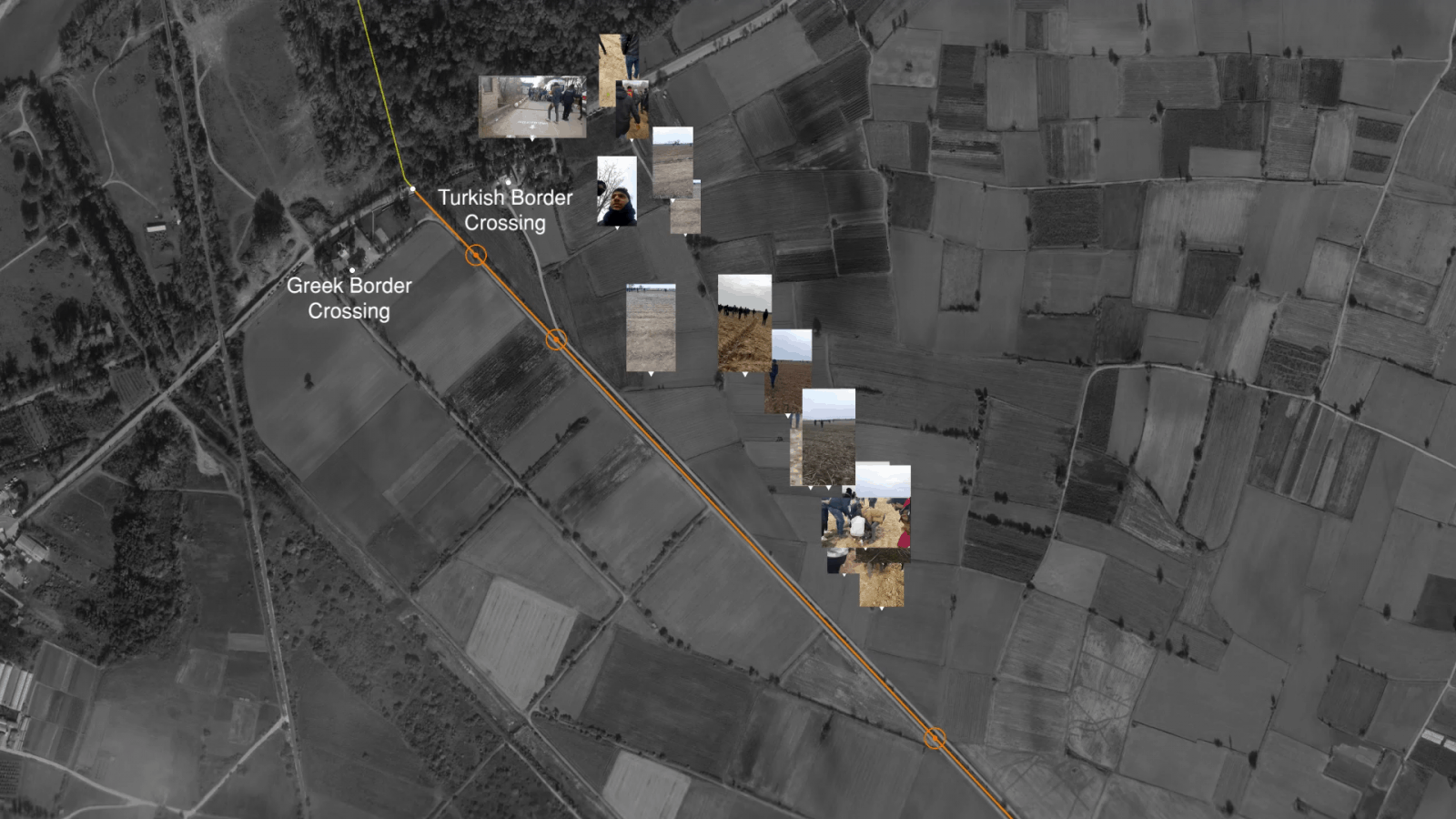
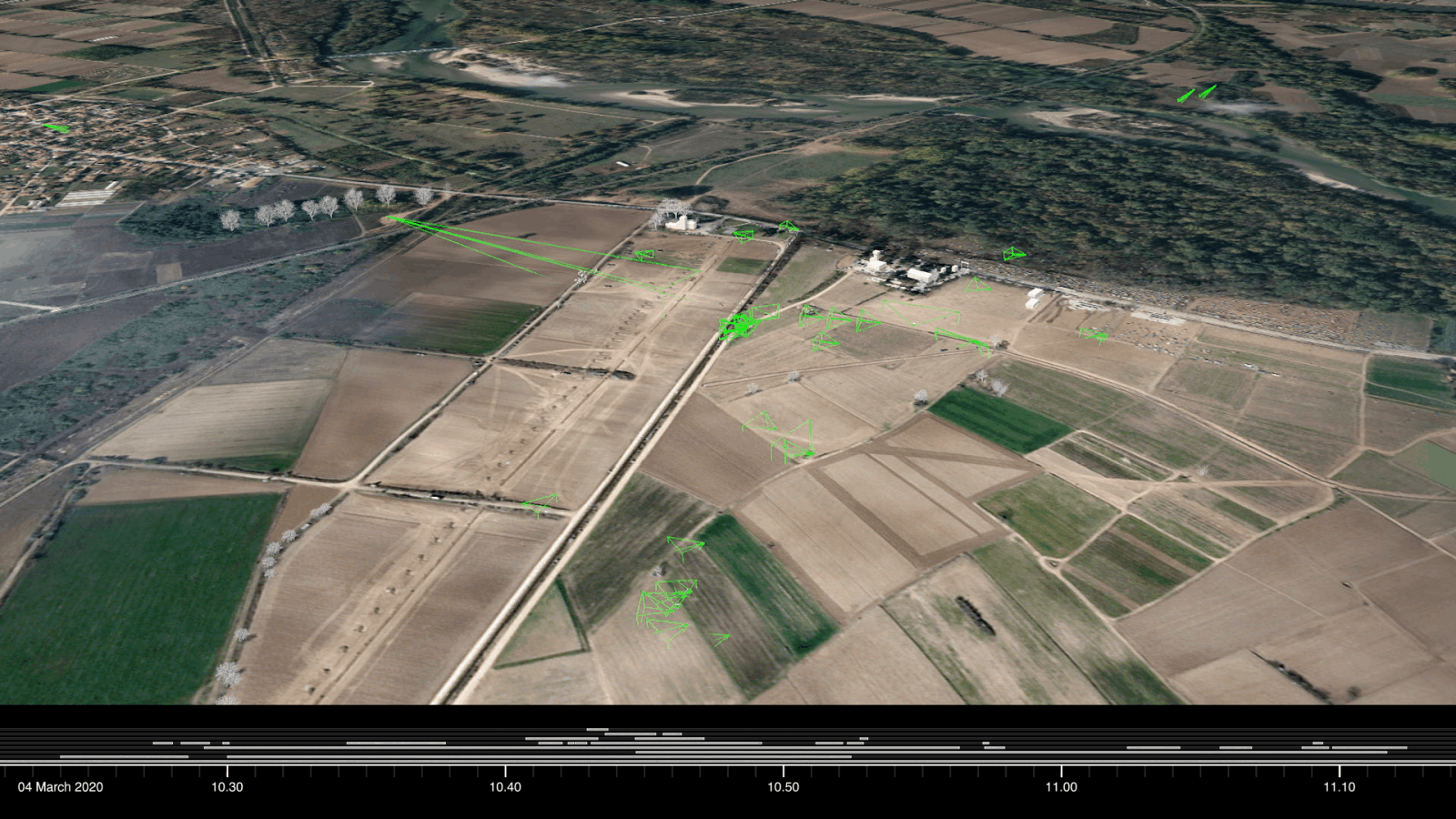
We identified seven wounded people, including Muhammad Gulzar. We distinguished between them based on their clothing, their unique injuries, and the blankets they were carried in. This helped us track each person across the different videos and to determine the time and location these people were wounded.

We used specific events, such as bursts of gunfire, as temporal indicators that helped us synchronise the videos and create a continuous timeline of events.
We collaborated with an expert at Beck Audio Forensics, to analyse these bursts and determine whether they were blanks or live fire. Using spectrogram analysis, the expert determined they were live rounds fired from a semi-automatic rifle. The expert was also able to determine the location of the shooters in relation to the camera position.
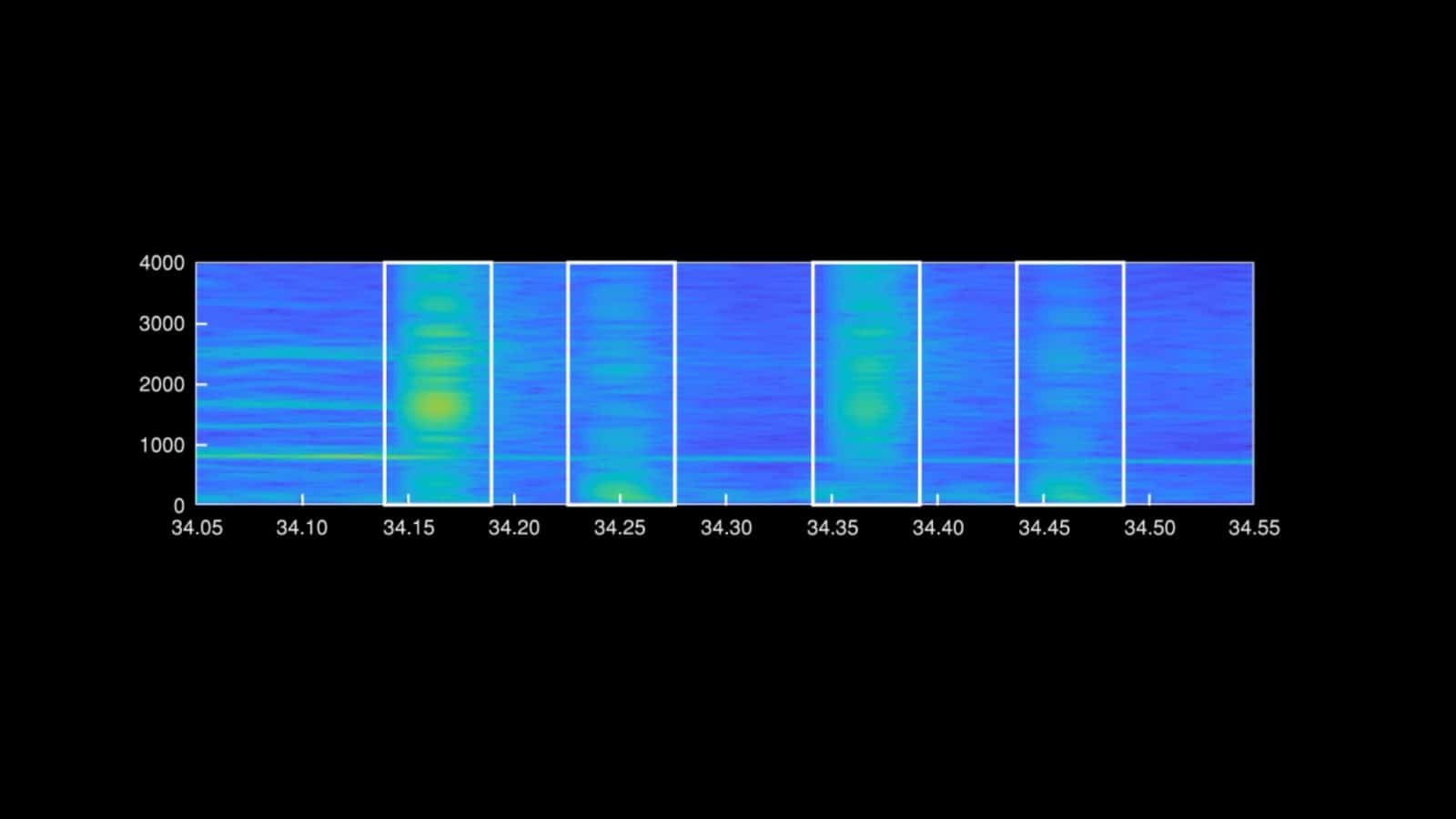
We obtained medical documents stating a 5.56mm bullet was retrieved from Gulzar’s body. We examined the available footage for personnel carrying rifles compatible with bullets of that calibre. We found several photos and videos that capture Greek soldiers armed with rifles capable of firing 5.56mm bullets along the border fence. We couldn’t find any such weapons on the Turkish side of the border.
